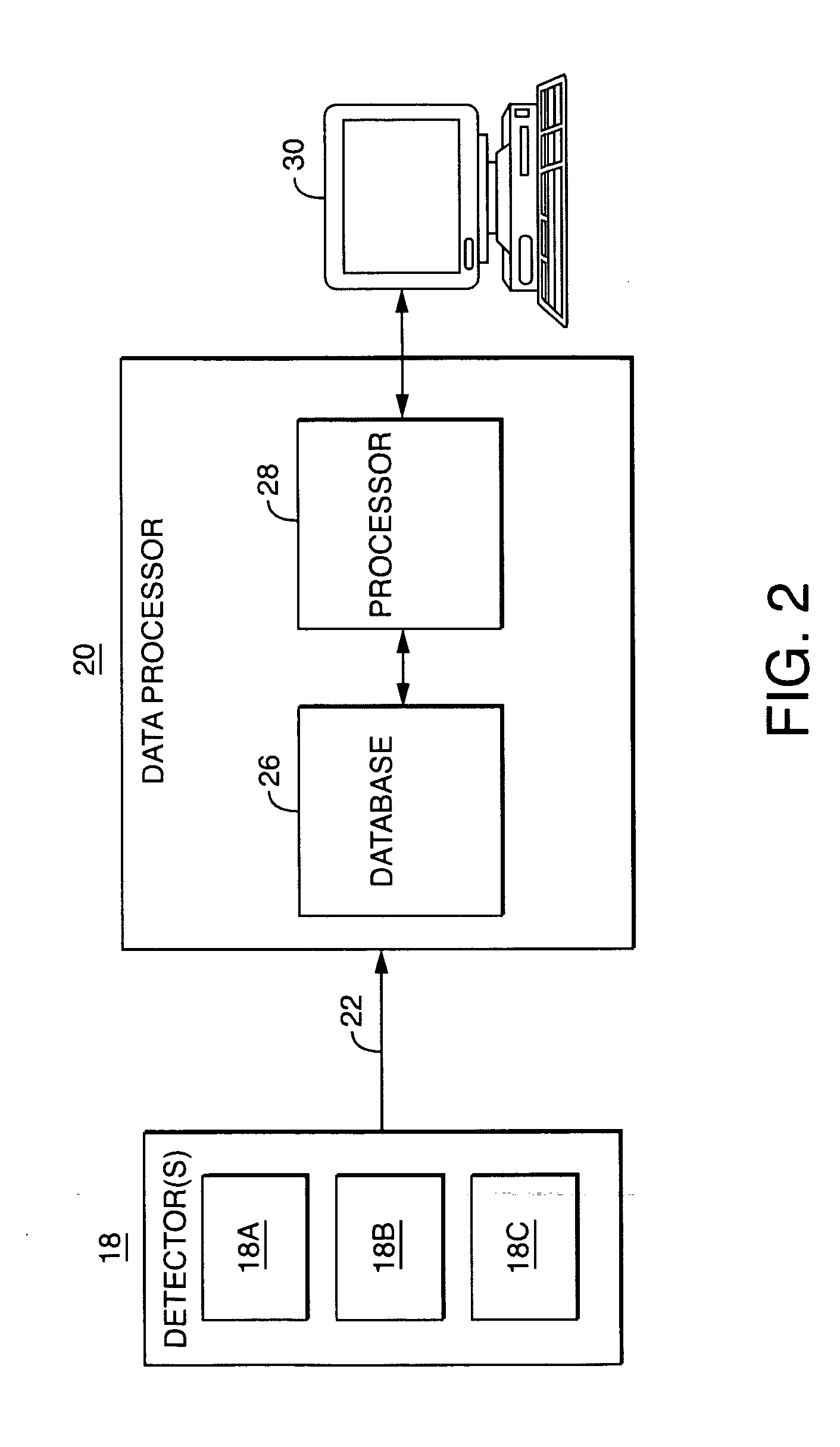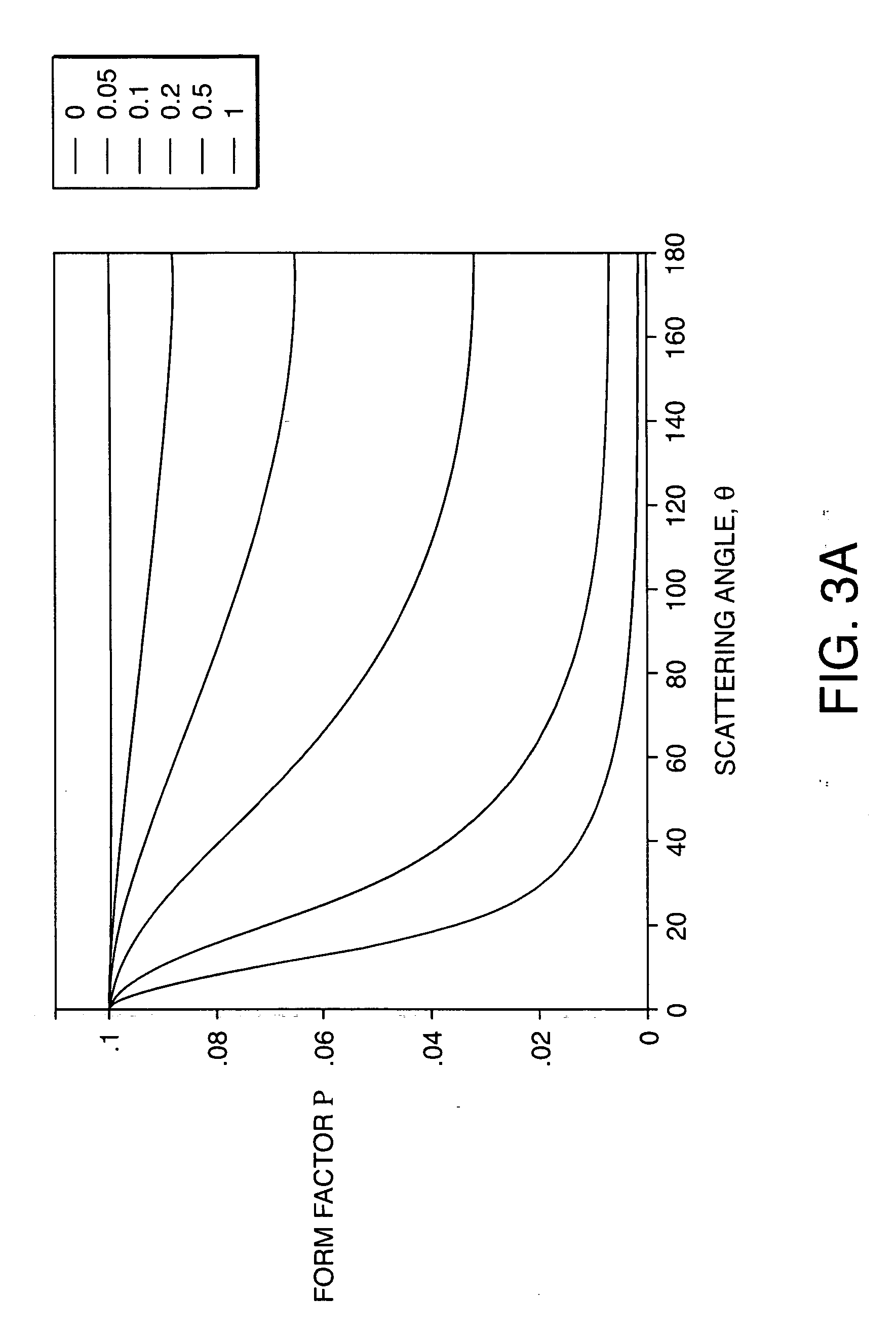System and method for determining radius of gyration, molecular weight, and intrinsic viscosity of a polymeric distribution using gel permeation chromatography and light scattering detection
a gel permeation chromatography and light scattering detection technology, applied in the field of analysis, can solve the problems of different elution volumes, detector noise present in the measured values of rayleigh, and introduce errors in all quantities derived
- Summary
- Abstract
- Description
- Claims
- Application Information
AI Technical Summary
Problems solved by technology
Method used
Image
Examples
Embodiment Construction
[0050] An illustrative gel permeation chromatography (GPC) system for determining radius of gyration, molecular weight and intrinsic viscosity of a polymeric distribution is illustrated in FIG. 1. A solvent reservoir 10 provides solvent that is pumped by a solvent pump 12. At the injection valve 13, the polymeric sample 14 is introduced into the solvent flow. The solvent along with the polymeric sample 14 then passes through a set of columns 16 which contain the chromatographic bed. The solvent then passes through a detector 18, where one or several detectors analyze the solution and determine the presence and properties of polymer chains. This information is supplied to a data processor 20, as shown by arrow 22. The waste solution then collects in a container 24.
[0051] The GPC separation is effected by a pump that forces the solvent through the set of columns 16 containing packed beads (the chromatographic bed) that possess a distribution of pore sizes. In one illustrative embodim...
PUM
| Property | Measurement | Unit |
|---|---|---|
| angles | aaaaa | aaaaa |
| angles | aaaaa | aaaaa |
| angles | aaaaa | aaaaa |
Abstract
Description
Claims
Application Information
 Login to View More
Login to View More - R&D
- Intellectual Property
- Life Sciences
- Materials
- Tech Scout
- Unparalleled Data Quality
- Higher Quality Content
- 60% Fewer Hallucinations
Browse by: Latest US Patents, China's latest patents, Technical Efficacy Thesaurus, Application Domain, Technology Topic, Popular Technical Reports.
© 2025 PatSnap. All rights reserved.Legal|Privacy policy|Modern Slavery Act Transparency Statement|Sitemap|About US| Contact US: help@patsnap.com



